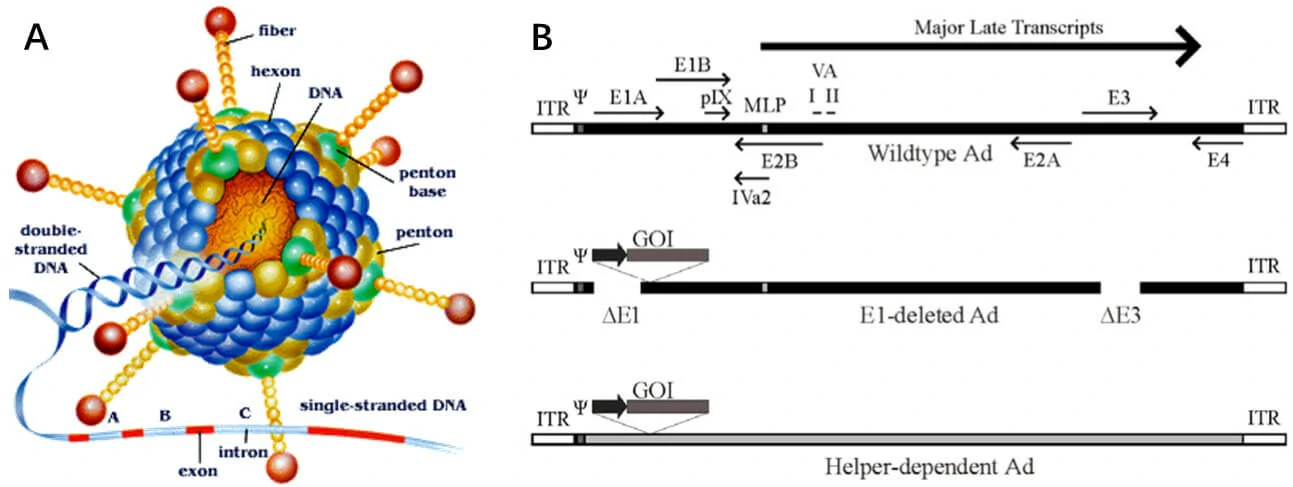Adenovirus Genome Structure (ITR, E1, E2A……) and adenovirus assembly
 Adenovirus protocol Download
Adenovirus protocol Download
 Figure1. Schematic of the adenovirus genome and adenovirus-based vectors. (A) Capsid crystal structure. (B) Adenovirus gene map. Top panel: A simplified map of the adenovirus serotype 5 genome showing the early genes (E1–E4) and the region from which the major late transcript is produced. Middle panel: General structure of an early region 1 (E1)-deleted Ad vector. Bottom panel: General structure of a helper-dependent Ad vector [15].
Figure1. Schematic of the adenovirus genome and adenovirus-based vectors. (A) Capsid crystal structure. (B) Adenovirus gene map. Top panel: A simplified map of the adenovirus serotype 5 genome showing the early genes (E1–E4) and the region from which the major late transcript is produced. Middle panel: General structure of an early region 1 (E1)-deleted Ad vector. Bottom panel: General structure of a helper-dependent Ad vector [15].
| Adenovirus protein | Functions |
| Capsid proteins II, III, IIIa, IV, VI, VIII, and IX | Structural proteins |
| Core proteins V, VII, X | Structural proteins |
| Terminal protein TP | Structural proteins |
| IVa2, 52K, L1, and 100K | Encapsidation proteins, assembly of viral capsids |
| L3 protease | Cleave viral precursor proteins pTP, pVI, pVII, pVIII, and IIIa to produce the mature viral proteins |
| E1A | Activate transcription of a number of viral genes as well as genes of the host cell |
| E1B 55K | Bind to and inactivate the transcriptional regulator p53, thus blocking transcription of genes normally activated by p53 and contributing to the suppression of apoptosis |
| E2A and E2B | Involve in replication of viral DNA |
| E3 RIDα and E3 RIDβ | Membrane proteins, perform a variety of molecular functions that contribute to inhibiting apoptosis |
| CR1β | Membrane glycoprotein, modulate the host immune response |
| E3 gp19K | Membrane glycoprotein, inhibit the insertion of class I MHC proteins in the host-cell membrane, thereby preventing T-cell lymphocytes from recognizing that the host cell has been infected by a virus |
| E3 14.7K | Protect the virus from host antiviral responses |
| E4 transcription unit | Involve in regulating transcription of viral DNA |
View Adenovirus Knowledge Base>>
Other knowledge bases
AAV Knowledge Base CRISPR/Cas9-gRNA system Knowledge Base |
Adenovirus Knowledge Base Transfection Knowledge Base |
Lentivirus Knowledge Base Advanced cell therapy |







